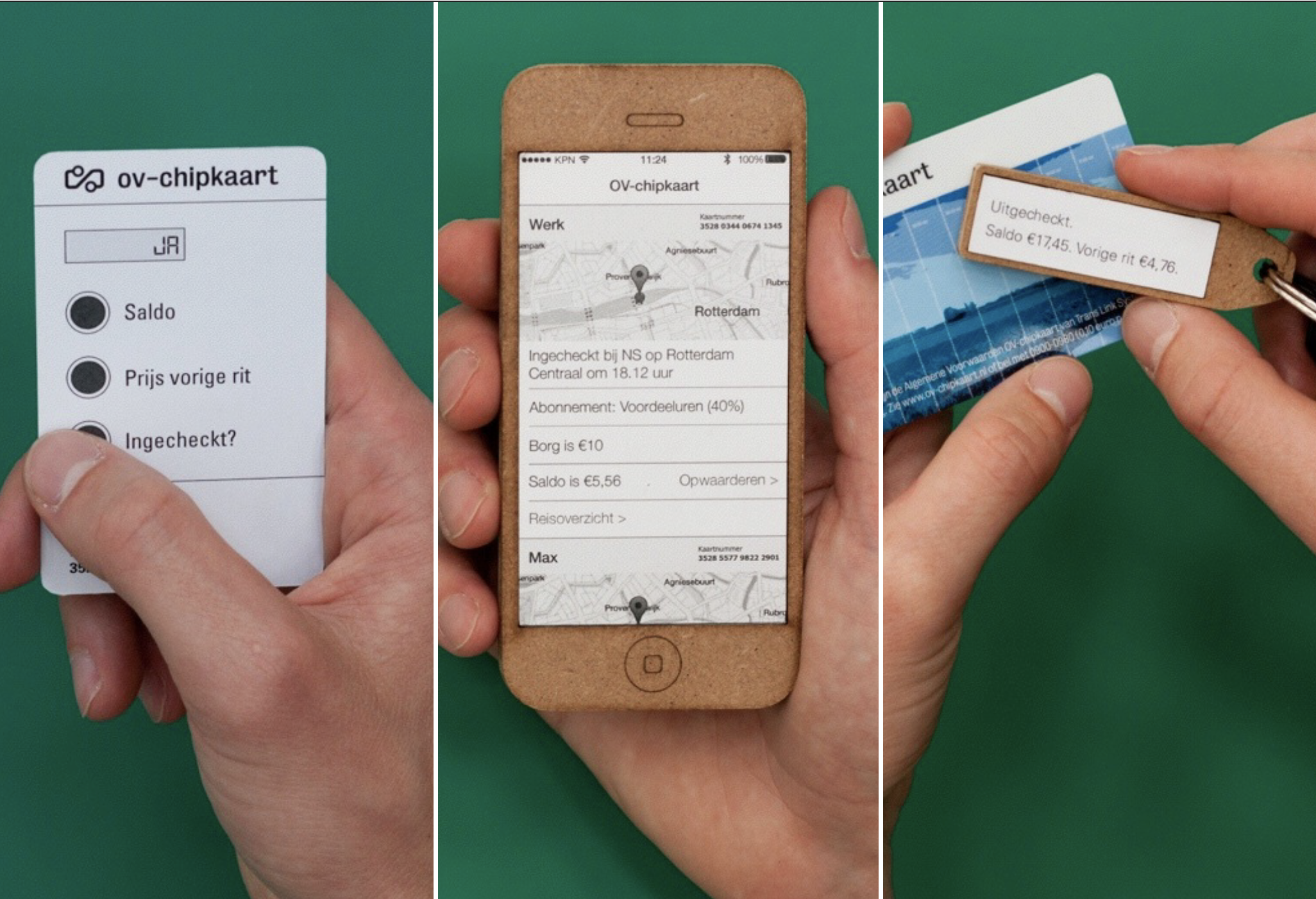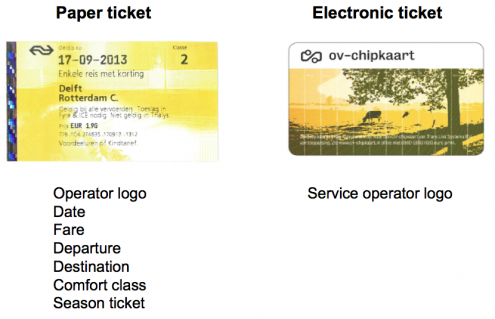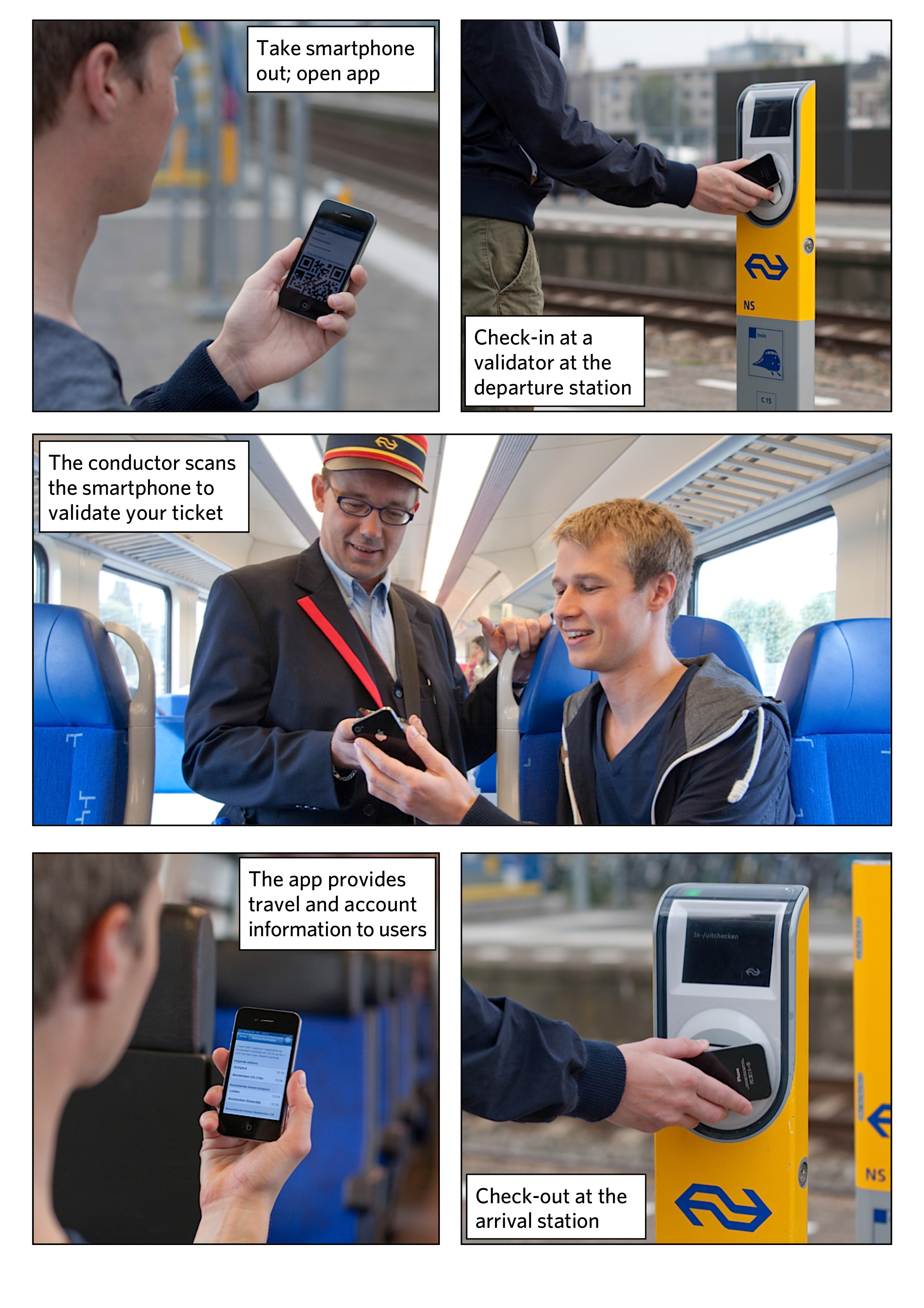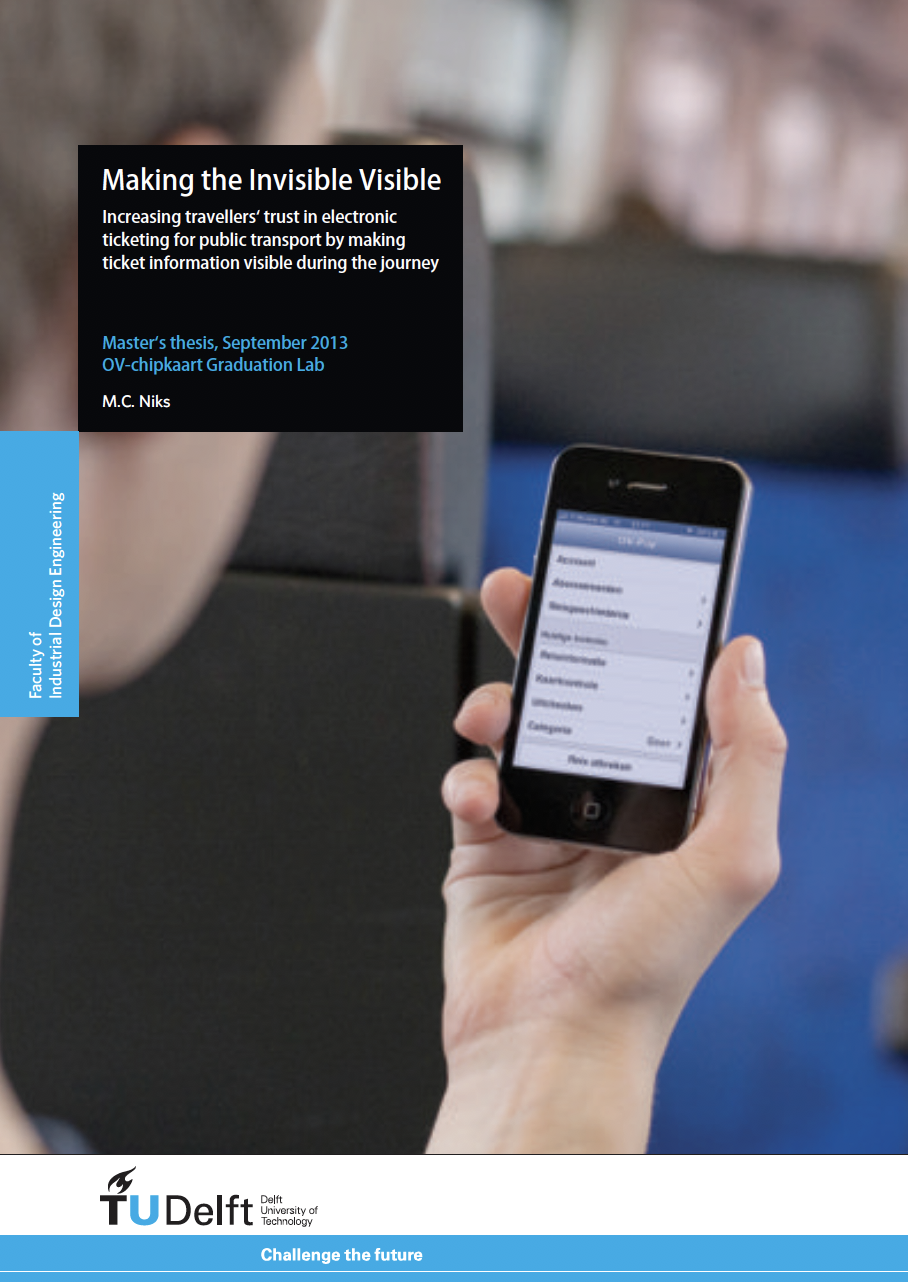Making the invisible visible
Making the invisible visible
Goal
To once again make information visible that used to be present on paper tickets (such as: valid ticket, com for class, season ticket, etc) and that with the introduction of the OV-chipkaart became invisible for its users. This intent was to make this information visible for a large a group of travellers as possible, and thus increase travel comfort and trust in the system.
To gain a better insight in the information need of travellers, interviews were conducted with travellers underway, at home and at railway stations. This produced the following user requirements:
- Offer insight into: validity of ticket (checked-in or not), costs of last trip, season ticket/reduction and preferably also travel history;
- Increase transparency for less-frequent travellers, because especially this group has the biggest problems with the current lack of status information;
- Make traveller status information accessible during the whole journey, because travellers may want to check their status at any time when travelling.
Goal
To once again make information visible that used to be present on paper tickets (such as: valid ticket, com for class, season ticket, etc) and that with the introduction of the OV-chipkaart became invisible for its users. This intent was to make this information visible for a large a group of travellers as possible, and thus increase travel comfort and trust in the system.
To gain a better insight in the information need of travellers, interviews were conducted with travellers underway, at home and at railway stations. This produced the following user requirements:
- Offer insight into: validity of ticket (checked-in or not), costs of last trip, season ticket/reduction and preferably also travel history;
- Increase transparency for less-frequent travellers, because especially this group has the biggest problems with the current lack of status information;
- Make traveller status information accessible during the whole journey, because travellers may want to check their status at any time when travelling.
In addition to the user requirements, an exploration was performed of the state of the art of required technologies for: traveller identification, data communication between validators and the ‘card’ (traveller identification module), visualising information for users, and energy storage.
Concept generation and selection
Based on the user requirements and available technologies four solutions were generated and evaluated with users and experts:
- ‘Key fob’ that can read the information stored on the OV-chipkaart;
- Smartcard with integrated display;
- Smartphone that can read the information stored on the OV-chipkaart;
- Smartphone that communicates directly with the OV-chipkaart backbone.
These solutions – in the form of low-fidelity prototypes – have been evaluated with users. During the evaluation the smartcard with integrated display and the smartphone that communicates directly with the OV-chipkaart backbone surfaced as the most appealing concepts. Of the people that own a smartphone, the bigger part would like to use it for checking in and out. This does not hold for non-smartphone users and a smaller part of the smartphone owners. These preferred the display card.
Display card and app
This is why the display card and an app that allows people to check in with their smartphone were refined further and once again evaluated with users. Because with regard to the app there were most unknowns, this interaction was explored in more detail. It was tried to create an app design that was feasible to realise in the near future, and the solution for this was found in creating a design that uses a QR-code to identify the traveller at gates and poles equipped with a barcode scanner.
Interaction prototypes of the three concepts: display card, mobile phone and key fob





